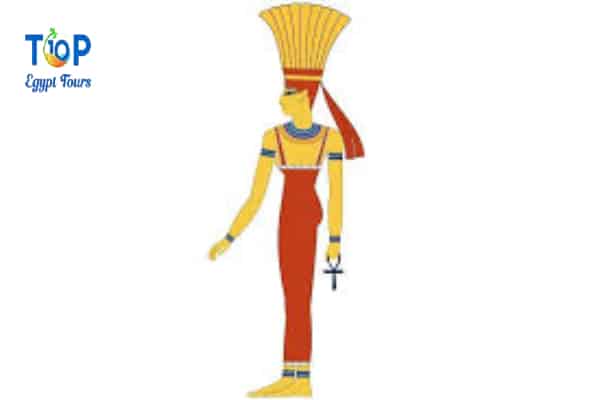Unveiling Anuket: The Enchanting Deity Who Nurtures Life along the Nile
Anuket The Majestic Goddess of the Nile, Welcome to Top Ten Egypt Tours, your portal to the captivating world of ancient Egyptian mythology. Today, we embark on a journey to explore the profound significance of Anuket, the goddess who personified the Nile River and symbolized fertility, prosperity, and abundance. Join us as we delve into the rich tales and mystical attributes surrounding this majestic deity, and discover the vital role she played in the tapestry of ancient Egyptian culture.
Anuket The Majestic Goddess of the Nile, also known as “Anqet” or “Anukis,” was celebrated as the enchantress who bestowed life-giving waters upon the fertile lands nurtured by the Nile River. With her regal presence and benevolent spirit, she was revered as the patroness of the river’s annual flood, which played a pivotal role in sustaining the agricultural abundance of ancient Egypt. Let us dive into the realm of Anuket and uncover the captivating tales that made her an integral part of the ancient Egyptian pantheon.
The Legends of Anuket The Majestic Goddess of the Nile:
In the ancient Egyptian mythology, Anuket was regarded as one of the most revered goddesses, embodying the life-giving essence of the Nile River. According to ancient tales, she emerged from the depths of the river, adorning a tall feathered crown symbolizing her royal authority over the waters. Anuket’s benevolent nature endeared her to the people of Egypt, who saw her as the protector of their land’s prosperity and abundance.
It is said that Anuket’s nurturing spirit extended beyond the life-giving waters of the Nile. She was believed to safeguard the river’s banks, protecting villages and farmlands from floods and droughts. The ancient Egyptians sought her favor by performing rituals and offering prayers, knowing that Anuket’s benevolence would ensure the continuation of fertile lands and a bountiful harvest.
Anuket’s Role in Fertility and Abundance: The Blessings of the Divine Waters
Anuket’s association with fertility and abundance was central to her role in ancient Egyptian mythology. The annual flood of the Nile River, known as the “Inundation,” was believed to be a manifestation of Anuket’s divine power. As the river overflowed its banks, it deposited nutrient-rich silt on the surrounding farmlands, rejuvenating the soil and providing the ideal conditions for agricultural prosperity.
The ancient Egyptians revered Anuket as the giver of life, attributing the success of their crops and livestock to her blessings. Farmers celebrated her during annual festivals, offering prayers and performing rituals to express gratitude for her abundant gifts. Anuket’s influence extended to the realm of human fertility as well, with couples seeking her intercession for blessings of children and prosperous families.
The Worship of Anuket: Temples and Rituals Along the Banks of the Nile
Throughout ancient Egypt, magnificent temples were dedicated to the worship of Anuket, standing as testaments to the deep reverence held for the goddess. Perhaps the most renowned of these temples was the Temple of Anuket in the ancient city of Elephantine, located in the southern part of Egypt. Pilgrims and devotees flocked to these sacred sites, seeking the blessings and protection of Anuket.
Rituals devoted to Anuket included processions, music, and dance performances that symbolized the joy and abundance brought by the Nile floods. Offerings of food, flowers, and incense were made as a gesture of reverence and gratitude. These ceremonies allowed the ancient Egyptians to engage with the divine essence of Anuket and foster a deeper connection with the life-giving waters of the Nile.
Anuket in Art and Symbolism: The Regal Queen of the Nile
Anuket’s majestic presence was vividly depicted in ancient Egyptian art. She was often portrayed as a beautiful woman donning a crown adorned with feathers, symbolizing her connection to the river and its abundant wildlife. These depictions showcased her regal nature, emphasizing her role as the queen of the Nile. The ancient artists’ meticulous attention to detail served to convey the awe-inspiring power and beauty associated with Anuket.
The Nile itself was often depicted as a deity, male in form, with Anuket serving as his consort. This imagery emphasized the interconnectedness of Anuket and the life-giving waters. The goddess was also depicted with the insignia of fertility, including lotus flowers and papyrus plants, further highlighting her role as the bestower of abundance.



Comment (0)